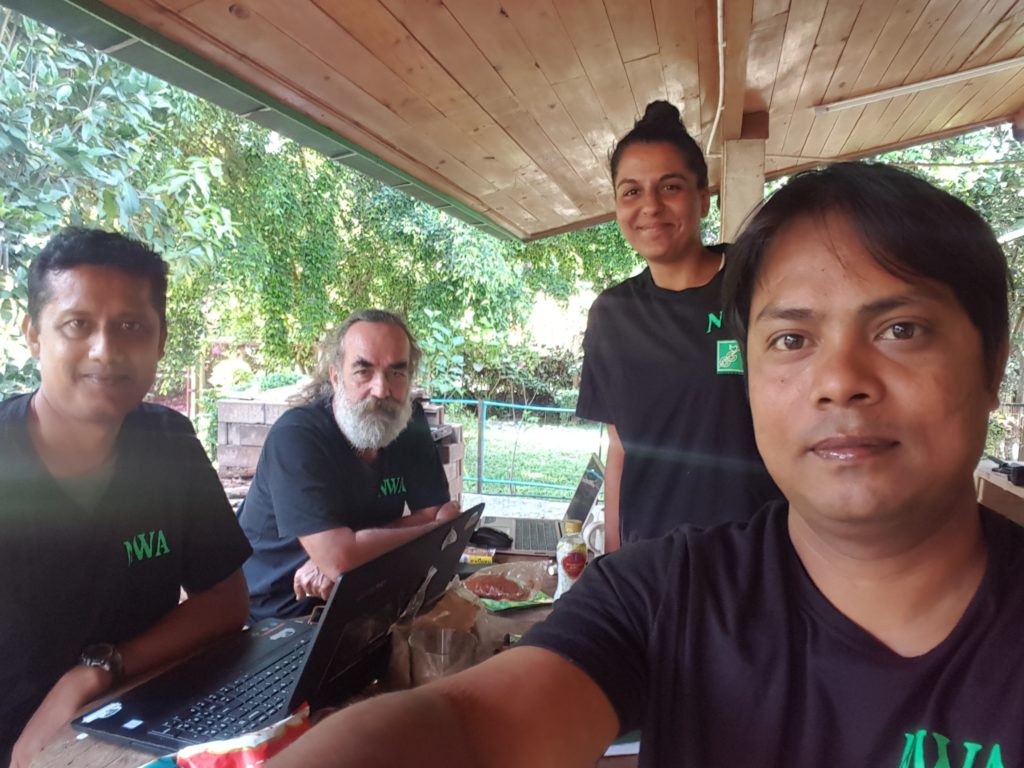Recommendations for mitigation of elephant-train hit accidents in Assam and India.
Meeting between Nature & Wildlife Association of France and Green Guard Nature Organization of India
Date: 13/02/218
Venue: NWA Office, Thailand
Attended by: NWA President Andy Merk, NWA Secretary General Lailani Fouad, Green Guard Secretary General Rituraj Phukan and its Executive Board Member Binod Borah
Agenda: Recommendations for mitigation of elephant-train hit accidents in Assam and India.
The meeting started with a discussion of the known facts regarding the frequent incidents of elephant death from train hits in Assam and India.
The following points were discussed and listed-
- Over 12 elephants killed by train in last 2 months in Assam
- More than 1 elephant killed in most incidents
- Elephant population has increased while habitat loss is rampant leading to scarce food sources
- While the focus is on protected areas, many incidents occur elsewhere
Questions needed to be answered and resolutions.
- Why are the elephants on the railway tracks? What are they really doing there?
Recommendations:
It is often assumed that the elephants were crossing the railway tracks during train hit incidents. But we need proper investigation and monitoring to establish the facts.
Are elephants feeding on or along the tracks? There is grass on both sides of railway tracks and it is possible that they are feeding there. They may also be attracted by food and garbage on the tracks.
Considering the multiple number of casualties during every incident, it is also possible that elephants are sleeping on the tracks. Another possibility is that the elephants are walking on or along the tracks.
- How to monitor elephant activities on the track? Why is it that train hits happen only at night?
Recommendations:
Better lighting on trains, tracks, use of reflectors, use of dash cams and a dedicated monitoring team can help monitor elephant movement on the railway tracks even during the night.
There is available technology to facilitate the monitoring of elephant movement. For example the company Blackvue (Blackvue.com) offers a dash cam with remote live view and backup.
The Automated Early Warning System AEWS by RailVision, the Israel based company provides an on-train early warning system that could track and warn drivers from 1.5 kms.
https://www.railvision.co.il/product
- Are there seasonal patterns of train hits? Are existing safeguards and regulations enough?
Train hits are frequently reported during the winter months.
Recommendations:
An accessible database of such incidents will facilitate better coordination and implementation of additional measures whenever required.
NWA and Green Guard Nature Organization has documented the degradation of existing elephant habitats due to the proliferation of invasive species of plants.
It is important that removal of invasive species and habitat restoration, along with population management, are given due importance to reduce such incidents and facilitate human-elephant coexistence in the long-term.
